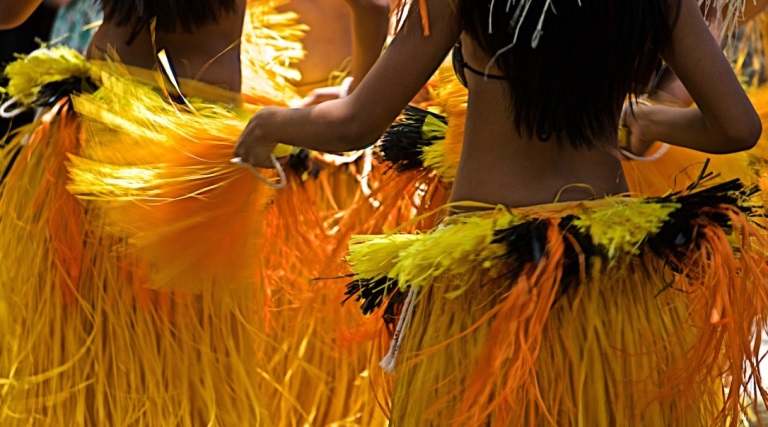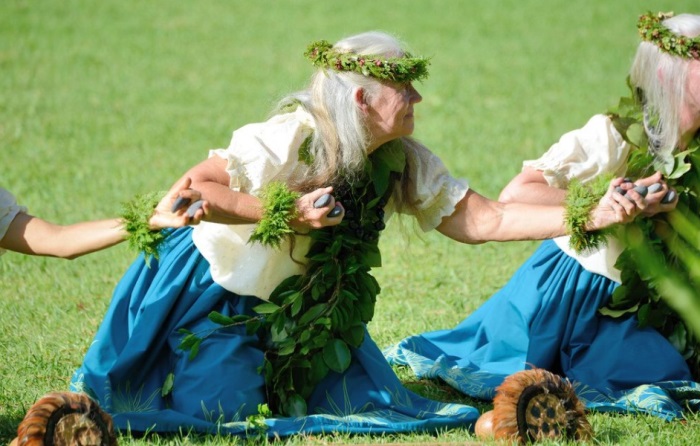The ultimate traditional Hawaiian dance is Hula, although you might have seen various versions and adaptations of it.
The most well-known Hula dances are Hula Kahiko and Hula ‘Auana, but Hula Kahiko ultimately wins with its fascinating history and enriched traditions.
Let’s dive into the interesting tidbits behind this oldest Hawaiian dance!
Table of Contents
Hula Kahiko Is The Traditional Hawaiian Dance
Hula dancing is known for being complicated, including various hand motions conveying and visualizing the lyrics of the accompanying song, and these signature details are more evident in Hula Hahiko.
Experts often classify Hula Kahiko as the pieces composed before 1894. Therefore, its performance doesn’t include modern musical instruments such as the ukulele or guitar.
In Hula Kahiko, you will find a variety of moods and styles, from frivolous to solemn. A majority of them are for honoring the chiefs, the rest are for entertainment.
When serving as a religious practice for a Hawaiian deity, it has to be perfect. People believe even a small mistake could end up in the failure of the entire performance, resulting in misfortune and severe consequences.
Therefore, during the training period, dancers seek protection from a goddess so they can stay safe, for mistakes are inevitable.
Types of Hula Kahiko
We can recognize a Hula Kahiko performance through its trademark resonant and deep sounds, which give off a hypnotizing vibe.
However, there are still many variations of the dance that we should be aware of.
Hula Ali’i
The word Ali’i refers to the noble individuals in Hawaii and its islands, hence the Hula Ali’i variation is the traditional nobility of Hula Kahiko. It honors a monarch or chief by telling a story about the person.
The dancers typically put a skirt made of kī leaves over the famous traditional Hawaiian dance costumes. Approximately fifty leaves are required to make one of these dresses.
The kī leaves hold a sacred meaning and symbolize the goddess of the Hula dance itself and the forest, hence only the elites are allowed to wear these skirts.
Meanwhile, male dancers will wear loincloths or malo like any other day. Accessories are optional and available if they want to add more personal touches to their dance costume.
Hula `Ili`ili
By definition, `Ili`ili means a lava stone worn by water and utilized as castanets. In Hula `Ili`ili, these stones became the main instruments.
People consider it a tool to be found unexpectedly rather than to be made, but craftsmen sometimes work on selected pebbles to complete a set of instruments if necessary.
When performing, the dancers will hold ili’ili and put themselves in a kneeling position while doing the chants. They often come from hālau hula – local dance schools run by carriers of Hawaiian traditions.
You can find this Hula form in celebrations of the Hawaiian identity, especially festivals and competitions. The tune itself is also quite popular in Hawaii’s contemporary music.
Hula Holoholana
Compared to the first two Hula dances, Holoholana has a tighter bond with nature because it talks about animals. The species included but not limited to are turtle (honu), dog (`îlio), pig (pua `a), and manô (shark).
The dancers will mimic the sounds of these animals and further animate their performances by scooting, sitting, standing, or any posture they deem fit.
Hula Pele
Pele is the goddess of fire, wind, lighting, and volcano, according to the Hawaiian belief. The Hula Pele dance is traditionally a ritual to worship the goddess.
The performances of Hula Pele are stories about her connections and journeys. Hence, they are often highly intense and energetic, posing a challenge for any dancer to conquer.
Where To Enjoy Traditional Hawaiian Dance?
The easiest way is certainly to look for records and clips on the internet! We are living in a digital age where music and dance are no longer inaccessible to foreigners.
Nonetheless, it might not always work if you want to see Hula on a formal stage and not at a social gathering.
When you are in the audience of a Hula performance, you are expected to enjoy it with the utmost respect because Hula dancers have gone through so much to be qualified for a public showcase.
The staff of the event have the right to request a proper distance between you and the stage, your silence, or the absence of recording devices.
Even when you are not required to follow the etiquette, following the basics and maintaining good manners are appropriate and encouraged.
It left us with another choice: watch Hula’s live performance. If you are visiting the islands, there is no better way to enjoy them. Otherwise, Hawaii-themed hotels, resorts, and dance schools might offer a look into their traditions.
Check more: 7 Popular Traditional German Dances
Final Words
Despite being considered part of the prosperous Pacific culture and tradition, Hula is 100% a traditional Hawaiian dance.
Even though it might be showcased with traditions from other regions and lands, it shouldn’t be confused with them.
I truly enjoyed the Hula performance I got to watch. What about you?


